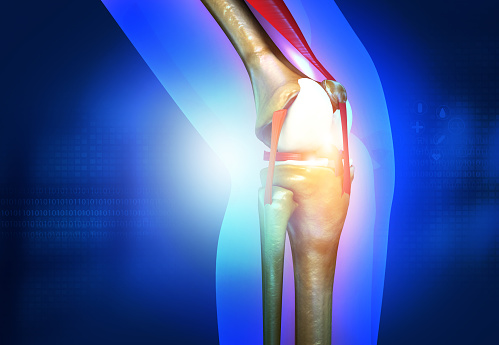Minimally Invasive Treatment Significantly Reduces Osteoarthritis-Related Knee Pain
Images

A new study published in the Journal of Vascular and Interventional Radiology shows that a minimally invasive treatment for osteoarthritis (OA) in the knees may have a lasting benefit of at least two years. The study of genicular artery embolization (GAE) followed 40 patients with moderate-to-severe symptomatic knee OA after their GAE treatment and measured pain scores throughout the 24-month study period. The patients were not candidates for total knee replacement.
“Knee osteoarthritis is a leading cause of adult disability and, until now, most minimally invasive treatment options have been proven to provide only short-term relief, measured in weeks or months,” said Siddharth A Padia, MD, FSIR, the lead author of the study and professor of radiology at UCLA Health. “For patients who are not candidates for knee replacement surgery, our study shows that GAE provides durable benefit to many patients, measurable for up to 2 years, a great leap forward in offering this cohort lasting relief.”
OA was once considered just a “wear and tear” process, but there is increasing evidence that the growth of new, abnormal synovial blood vessels causes painful inflammation, greatly contributing to OA symptoms throughout the body. GAE targets this abnormal blood flow to reduce inflammation, quickly improving patients’ pain.
To deliver treatment, interventional radiologists create a pinhole-size incision in the hip and insert a small catheter into the arteries in the arthritic knee. They, then, inject tiny particles to normalize the blood supply to inflamed and painful areas of the knee. The outpatient procedure takes approximately 1 to 2 hours, followed by a 2-hour recovery period.
For this prospective, single-arm study, researchers defined clinical success as a greater than 50%reduction in OA symptoms using the Western Ontario and McMaster Universities Osteoarthritis Index (WOMAC). A previous study of this cohort found that 25 of the patients (66%) reported improvement at 1 year. Of those 25, 18 patients (72%) have since reported continued relief of symptoms at 2 years. Overall, 18 of the original 38 patients (47%) who remained in the study throughout the 2-year follow up period reported a greater than 50% reduction in OA symptoms over the 2 years. No long-term adverse effects were reported.
“GAE is a promising therapeutic option for patients with osteoarthritis in the knee, allowing patients to return to their normal activities without lengthy recovery times,” said Padia. “We believe further investigation with larger cohorts and randomized controls should be conducted so we can validate these findings, refine patient selection and optimize the management of OA related knee pain.”